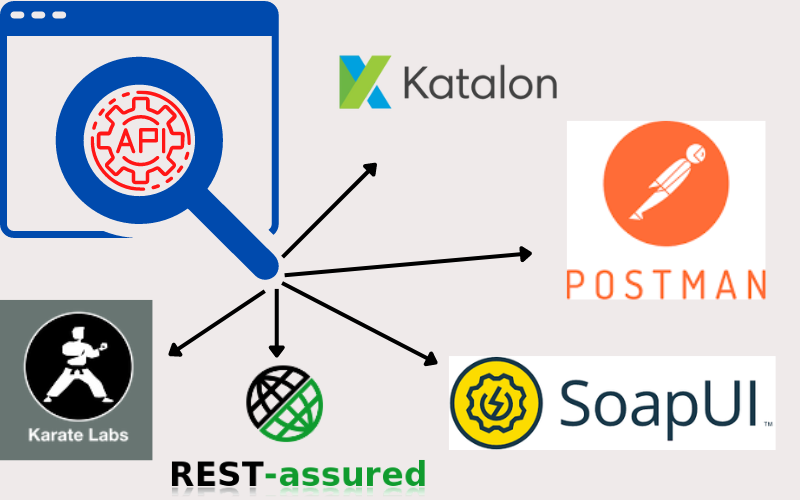API Testing Methodologies, Approaches, Tools, and Frameworks
One of the most crucial factors in our sector is determining whether the product your team is developing completely satisfies the client's specifications and business requirements. And this is the reason why API testing is vital for software development teams.
APIs are required for any application built nowadays. Therefore, it is essential to properly test APIs before releasing the product to clients or end users. QA testers must adopt API testing methodology to evaluate API functionality, API performance tests, and API security tests, whereas developers prefer to test only the core functionality they are working on. They examine if all components function cohesively from end to end. However, some QAs continue to bypass this layer of the test pyramid and proceed directly to UI testing at their own peril. This article explains why API testing is important and how to conduct it.

What is API Testing?
API testing is the process of evaluating the performance, functionality, security, and dependability of software. Validating data, HTTP status codes, and error codes for accuracy. In addition, one of the benefits of test automation is that it identifies defects, security flaws, and inconsistencies before UI release, saving your team money, time, and effort on human regression testing. Lack of API testing may result in inefficient software.
The types of testing performed for API testing are as follows:
Functionality: Is the API fully functional?
User experience: Is it simple to use?
Load: Does the file load correctly?
Security Testing: How effectively are data files encrypted?
Reliability: Can users successfully connect to the API and obtain results?
API documentation: how to direct a user to the API's purpose.
Methods for testing the API
1. Develop Testing Specifications for APIs
Before planning API tests, the tester must identify the scope and needs of testing. This section will discuss the API's purpose and intended user, application workflow, API capabilities and functions, and other subjects.
2. Develop an API Test Environment
After determining the functional scope of your API, the next step is to create an API test environment, which is normally the responsibility of DevOps engineers.
3. Send an API Test Call
Before beginning exhaustive testing, it is required to contact the API to confirm that it is operational and that nothing is broken.
4. Choose the Input Criteria
Consider all potential configurations of inputs. They will be incorporated into the test cases, and the results will be validated to confirm that the API is functioning correctly.
5. Create and execute Test Cases for APIs
After completing all essential preparations, testers must write and execute test cases, then compare the outcomes to what was intended. It is recommended to divide them into test category groups.
Top Tools for API Testing
There are a variety of API testing methods and tools, based on your testing requirements, budget, and available technology.
Before running any API tests, you should consider the following API testing tools.
Postman
Postman was formerly a Google Chrome extension. The Postman API testing tool service is now accessible on both Windows and Mac, making it an excellent option for exploratory and manual testing. You can use the Postman REST API testing tool for automated API testing setup and troubleshooting.
Katalon Studio
QA professionals can automate API, online, desktop, and mobile testing using Katalon Studio. This solution facilitates rapid deployment by combining all frameworks, ALM connections, and plugins into a single bundle. Katalon studio's capacity to mix UI and API/Web services for multiple platforms is one of its primary advantages.
SoapUI
This headless API testing tool may be used to test both SOAP and REST APIs as well as web services. Testers typically choose it as one of the most effective solutions for asynchronous testing based on complicated scenarios. Additionally, its data-driven testing and user-friendliness are notable.
REST Assured
REST Assured To begin using it, you must first create a new Java project and then include it as a library in your project.
Karate DSL
Karate DSL integrates API test automation, performance testing, UI automation, and mocks. It helps facilitate API testing by enabling users to design scenarios for API-based BDD tests and execute them without having to write down step specifications. Karate DSL is one of the open-source API testing tools, therefore it is free to use; however, the cost of the solution depends on the requirements.
Final Thoughts
This article has covered the fundamentals of API testing and API testing tools. We understand that it is difficult to make a decision because there is no ideal instrument for everyone. Consider Vconnex Services your trusted partner. Vconnex Services is a company that offers custom software development services and creates industry-specific software to meet the requirements of your organization. Our in-house development, design, and quality assurance teams are experts in cutting-edge technology. Contact us to gain access to our API development and testing services!

